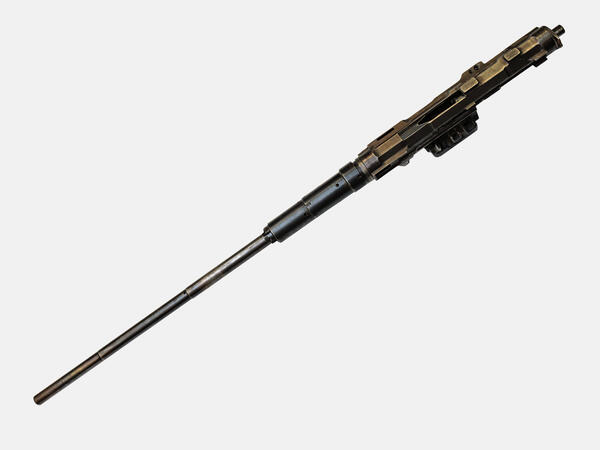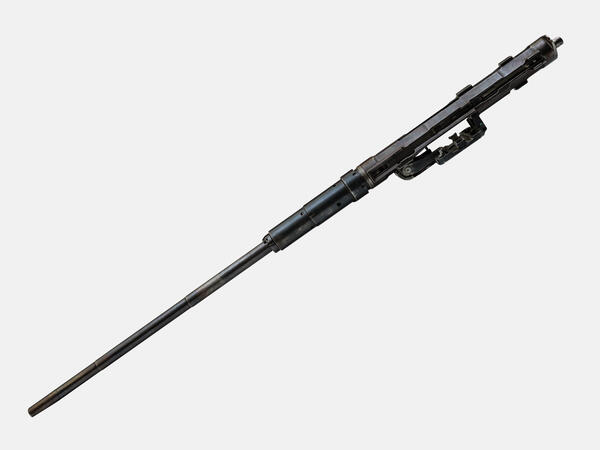In 1943, the OKB-16 Design Bureau created a new 23-millimeter round with a reduced charge. It was used in the development of several new light 23-millimeter aircraft autocannons. The muzzle velocity of the projectile weighing 200 grams with the barrel length of 1,450 millimeters was 700 meters per second.
In 1944, the NS-23 aircraft cannon was developed for the new cartridge. The Ilyushin Il-10 attack aircraft, Lavochkin La-9 and La-11 propeller-driven fighters, as well as the first Soviet MiG-9, MiG-15 and Yak-15 turbojet fighters were fitted with this autocannon.
However, due to the need to further improve the defensive armament of the developing Soviet bomber aviation, the NS-23 guns had to be more versatile and have a symmetrical double-sided belt feed mechanism. Therefore, already in December 1946, OKB-16 began designing the first model of a 23-millimeter gun, based on the NS-23 and adapted for both fixed and mobile mounts.
The new gun was developed by Alexander Emmanuilovich Nudelman and Aron Abramovich Richter and was called the Nudelman-Richter NR-23 autocannon.
The NR-23 was intended to replace the 20-millimeter B-20 aircraft cannon on the Tu-4 heavy bomber which was redesigned to accommodate the 23-millimeter caliber.
Two NR-23 guns were used for the first time on the La-15. The aircraft with new guns was put into service in 1948 (at the same time mass production of the NR-23 began).
The NR-23 cannon, chambered for the NS-23 round, was officially adopted in 1950.
Final improvements for the NR-23 were completed in 1951 (to reduce the recoil, a hydraulic buffer was introduced; in addition, at the request of the Minister of Armaments Dmitry Fedorovich Ustinov, the barrel’s life expectancy was increased from 3000 to 6000 shots).
The fundamental differences between the NR-23 and its predecessor are the double-sided belt feed mechanism that allowed for continuous firing and a higher rate of fire (up to 800–950 rounds per minute). Hence, recoil accelerators were introduced. The cannon is recoil-operated and has a short-stroke gas piston.
The double-sided belt feed mechanism greatly
simplified the installation of the gun on the aircraft, making it suitable for
mobile and fixed mounts.




